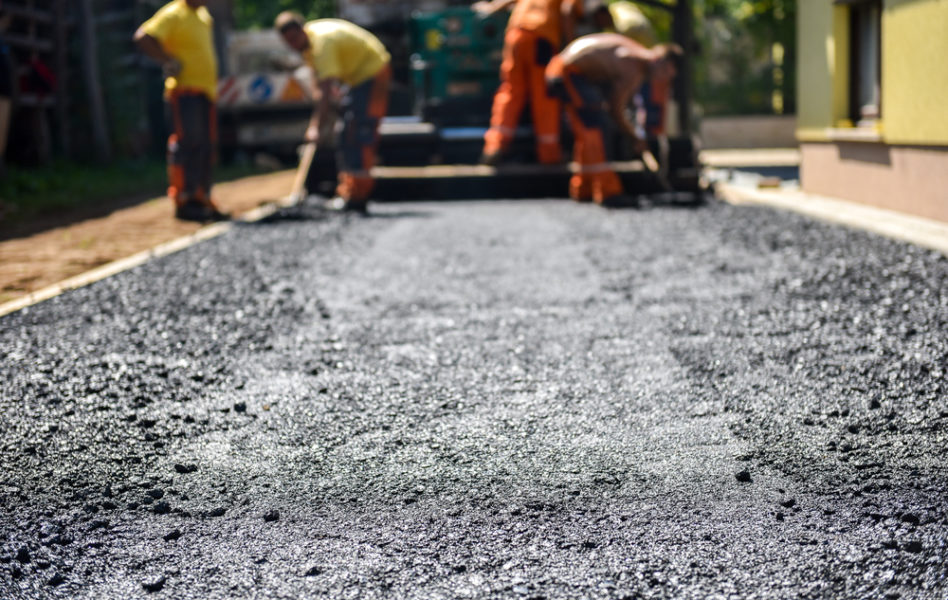Hot Mix Asphalt Paving: Your Portal to Premium Angled Parking Solutions
Hot Mix Asphalt Paving: Your Portal to Premium Angled Parking Solutions
Blog Article
Opening the Tricks of Hot Mix Asphalt Modern Technology
Checking out the midsts of hot mix asphalt modern technology reveals a world where precise processes and exact formulations merge to form our roadways and infrastructure. The blend of fillers, aggregates, and binders isn't simply a building job but a calculated orchestration of toughness and performance. As we peer into the detailed dance of components, a tapestry of durability and sustainability unfolds. What exists underneath this surface area of asphaltic proficiency, and what keys wait to be unveiled in the realm of paving innovations?
Importance of Warm Mix Asphalt
Hot Mix Asphalt plays an important function in modern-day facilities advancement due to its resilience and cost-effectiveness. As the most generally used paving product for roadways, highways, and auto parking great deals, Warm Mix Asphalt offers a variety of advantages that add to its relevance in building tasks.
The longevity of Warm Mix Asphalt comes from its composition, which consists of accumulations, binder, and filler products that are carefully picked and blended to fulfill specific performance requirements. This exact combination leads to a versatile and strong sidewalk that can sustain constant use without considerable wear and tear. Hot Mix Asphalt is 100% recyclable, additional boosting its sustainability and ecological benefits. Generally, the significance of Warm Mix Asphalt in infrastructure advancement can not be downplayed, as it proceeds to be a cornerstone of modern building practices.
Components of Asphalt Mixes
The structure of asphalt blends contains thoroughly selected accumulations, binder, and filler materials that are crucial for accomplishing details performance requirements. Accumulations are the primary element of asphalt mixes, providing strength and security. These aggregates can be natural, such as crushed rock or smashed stone, or synthetic, like recycled products from old sidewalks. The binder, normally asphalt or asphalt concrete, holds the accumulations together and provides flexibility and durability to the mix. The choice of the binder is important as it straight influences the mix's performance in different weather. Fillers, such as hydrated lime or Rose city cement, are made use of to enhance the mix's workability and aging resistance. Angled Parking.
The mix and percentage of these parts play a considerable duty in determining the quality and performance of the asphalt mix. Designers meticulously create the mix to satisfy particular demands, thinking about factors like traffic quantity, climate problems, and pavement life-span. Proper selection and harmonizing of accumulations, binder, and fillers are crucial for producing durable, long-lasting asphalt pavements.
Combining and Manufacturing Methods

As soon as the aggregates are selected, the binder, often asphalt cement, is contributed to bind the products with each other. The binder's quality and quantity substantially impact the mix's flexibility, strength, and resistance to environmental variables. In addition, fillers like hydrated lime or Rose city concrete might be incorporated to improve particular characteristics of the asphalt mix, such as its workability or dampness resistance.
During manufacturing, the accumulations and binder are warmed, typically between 250-325 ° F(121-163 ° C ), to facilitate mixing and make certain appropriate finishing of the aggregates. The mixing process should be detailed to achieve an uniform mixture that promotes the desired performance characteristics of the asphalt. Numerous methods, such as batch mixing or drum blending, are utilized to accomplish consistent and high-grade asphalt blends for read review building and construction tasks.
Elements Influencing Asphalt Efficiency
Elements affecting asphalt efficiency include a range of variables that impact the resilience, longevity, and overall quality of asphalt sidewalks. One essential element is the quality of products used in the asphalt mix.
Environmental conditions also influence asphalt efficiency. Temperature level variants, dampness infiltration, and website traffic tons can all influence the structural honesty of the sidewalk. Design considerations, such as sidewalk density and drain, are vital in making sure the lasting efficiency of the asphalt pavement. By thoroughly considering these aspects, designers and contractors can maximize asphalt performance and enhance the solution life of sidewalks.
Sustainable Practices in Asphalt Innovation

WMA allows for the production and positioning of asphalt blends at lower temperatures contrasted to conventional hot-mix asphalt, resulting in decreased energy intake and greenhouse gas exhausts. The use of permeable asphalt blends can assist minimize stormwater overflow issues by enabling water to infiltrate through the pavement and right into the ground, advertising natural water purification and recharge procedures.
Conclusion
In verdict, hot mix asphalt innovation plays a critical duty in modern facilities growth due to its sturdiness and cost-effectiveness. By thoroughly balancing parts, employing proper mixing techniques, and thinking about various factors, engineers can create high-grade asphalt mixes that stand up to rush hour lots and rough weather condition problems. Embracing sustainable practices, such as utilizing recycled products and warm-mix technologies, additionally improves the environmental kindness of asphalt innovation.
Mixing and production techniques in hot mix asphalt technology entail the precise mix and handling of accumulations, binder, and fillers to develop a high-performance and long lasting asphalt mix.Variables influencing asphalt performance include a range of variables useful source that impact the toughness, long life, and general high quality of asphalt pavements. Sustainable methods in asphalt innovation incorporate different campaigns aimed at minimizing the ecological impact of asphalt manufacturing and paving procedures. By integrating recovered asphalt pavement (RAP) and recycled asphalt tiles (RAS) into brand-new asphalt blends, the sector can substantially reduce the intake of raw products and power, while likewise decreasing landfill waste.
WMA enables for the manufacturing and placement of asphalt blends at lower temperature levels compared to standard hot-mix asphalt, resulting in minimized energy consumption and greenhouse gas emissions.
Report this page